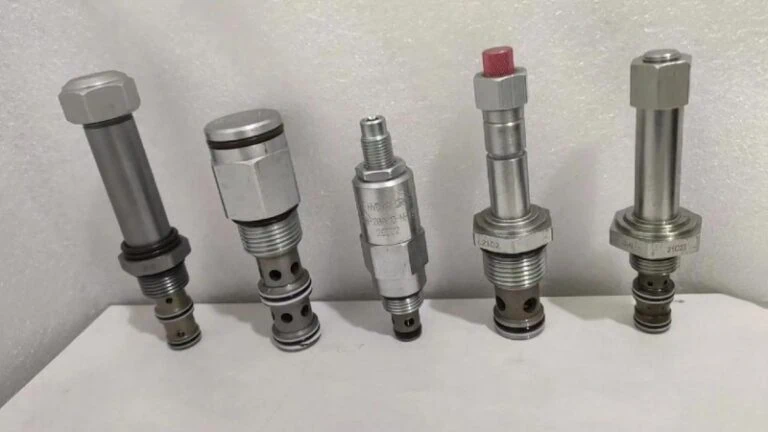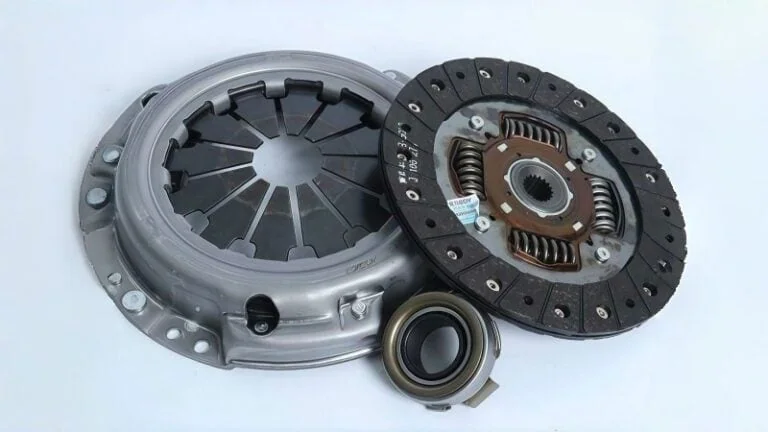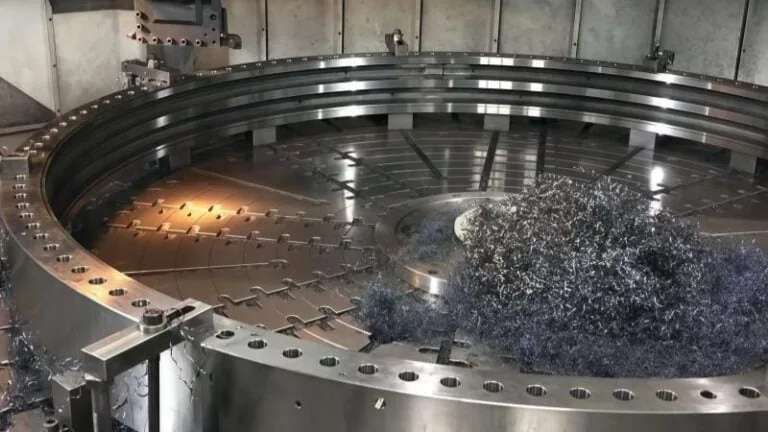-
Whatsapp: +86 13526572721
-
Email: info@zydiamondtools.com
-
Address: AUX Industrial Park, Zhengzhou City, Henan Province, China
-
Whatsapp: +86 13526572721
-
Email: info@zydiamondtools.com
-
Address: AUX Industrial Park, Zhengzhou City, Henan Province, China

How Do You Select the Optimal PCD Tools for Scroll Compressor Machining?

So, what does it take to select the right PCD tools for your scroll compressor machining operation?
Selecting the optimal PCD tools involves understanding their core advantages over carbide in tool life and precision, identifying the specific tools needed for each stage—from roughing to finishing—and optimizing critical machining parameters like speeds, feeds, and coolant strategy. Reviewing real-world case studies further validates the significant benefits in productivity and quality.
Why Choose PCD Over Carbide Tools for Scroll Machining?
So, why exactly is it worth switching from familiar carbide tools to PCD for machining scroll compressors?
The primary reason to choose PCD over carbide tools for scroll machining is its significantly longer tool life, which dramatically lowers the long-term cost-per-part. Furthermore, PCD delivers superior surface finishes and tighter dimensional accuracy, while offering unmatched performance on the high-silicon aluminum alloys typically used in scroll compressors.
Comparing Tool Life and Long-Term Cost-Per-Part
When you look at the initial price tag, a PCD (Polycrystalline Diamond) tool1 is certainly a bigger investment than a standard carbide tool. However, thinking only about the initial cost is like comparing the price of a single disposable battery to a professional, rechargeable power pack. The real story is in the long-term value and performance.
A carbide insert might successfully machine, for example, 2,000 scroll compressor parts before it wears out and needs to be replaced. In contrast, a properly applied PCD insert has the potential to machine 30,000 parts or more under similar conditions. This isn’t just a small improvement; it’s a monumental leap in durability.
Let’s look at what this means in a practical sense using a simple comparison.
| Metric | Standard Carbide Tool | PCD Tool | Advantage |
|---|---|---|---|
| Initial Tool Cost | Lower | Higher | – |
| Parts Machined Per Tool | ~2,000 | ~30,000 | 15x Longer Life |
| Tool Changes Needed | 15 | 1 | 14 Fewer Machine Stoppages |
| Total Cost Per Part | Higher (due to frequent replacements & downtime) | Significantly Lower | Increased Profitability |
This massive difference in tool life has several powerful effects:
- Reduced Cost-Per-Part: Even with a higher initial cost, dividing that cost over 30,000 parts results in a much lower tooling cost for each compressor you produce.
- Increased Machine Uptime: Every time a machine stops for a tool change, you lose valuable production time. By reducing tool changes significantly, you gain dozens, or even hundreds, of hours of uptime over the life of the PCD tool.
- Consistent Quality: Fewer tool changes mean greater process stability, leading to more consistent and predictable part quality from the first part to the last.
Ultimately, choosing PCD is an investment in efficiency. You pay more upfront to save a great deal more over time through dramatically lower tooling costs and vastly improved productivity.
Achieving Superior Surface Finish and Dimensional Accuracy
What good is a long-lasting tool if the parts it makes aren’t perfect? For a scroll compressor to work efficiently and quietly, its components must fit together with incredible precision. This is another area where PCD tools offer a distinct advantage.
Think of cutting with a standard knife versus a surgeon’s scalpel. The scalpel is so much sharper and harder that it glides through material, leaving a perfectly clean and smooth surface. PCD acts like that scalpel on metal. Because diamond is the hardest known material, a PCD cutting edge can be honed to an exceptional sharpness and will hold that edge for a very long time.
This results in two critical benefits for scroll compressors:
- Superior Surface Finish: A sharp, durable PCD edge cuts the metal cleanly rather than tearing or smearing it. This produces a mirror-like surface finish, often achieving an Ra (Roughness Average)2 of 0.4 µm or better. This level of smoothness is essential for creating an effective seal between the moving scrolls, which directly impacts the compressor’s efficiency.
- Exceptional Dimensional Accuracy: The stability and wear resistance of PCD means it holds its exact size and shape for thousands of parts. This allows manufacturers to consistently achieve extremely tight tolerances required for components like bearing bores and scroll profiles. For instance, maintaining a flank verticality of less than 0.008 mm is a common requirement that is difficult to hold with carbide as it wears, but is standard for PCD.
Consequently, using PCD tools often reduces or completely eliminates the need for secondary finishing operations like grinding or polishing, saving both time and money in the overall production process.
Performance on High-Silicon Aluminum Alloys
Scroll compressors are often made from high-silicon aluminum alloys, such as A390. This material is lightweight and strong, but it presents a major challenge for cutting tools. Why? Because the hard silicon particles embedded in the aluminum act like fine sandpaper, rapidly grinding away the cutting edge of a tool.
This is where the fundamental difference between carbide and diamond becomes clear.
Imagine trying to sand a diamond with a piece of paper. It’s impossible; the paper would be destroyed. This is essentially what happens on a microscopic level during machining.
- Carbide Tools: When machining high-silicon aluminum, the abrasive silicon particles quickly wear down the carbide edge. Furthermore, the heat and pressure can cause the aluminum to stick to the tool tip, a problem known as Built-Up Edge (BUE)3. This BUE ruins the surface finish and can cause the tool to fail unpredictably.
- PCD Tools: A PCD tool is made of diamond. Since diamond is much harder than silicon, the abrasive particles have very little effect on the cutting edge. Additionally, PCD is chemically less reactive with aluminum, which means Built-Up Edge is far less likely to form. The tool stays clean, sharp, and effective.
Therefore, PCD is not just a “better” option for high-silicon aluminum; it is the correct engineering solution. It is specifically suited to resist the abrasive wear and chemical challenges posed by these materials, ensuring a stable, reliable, and high-performance machining process from start to finish.
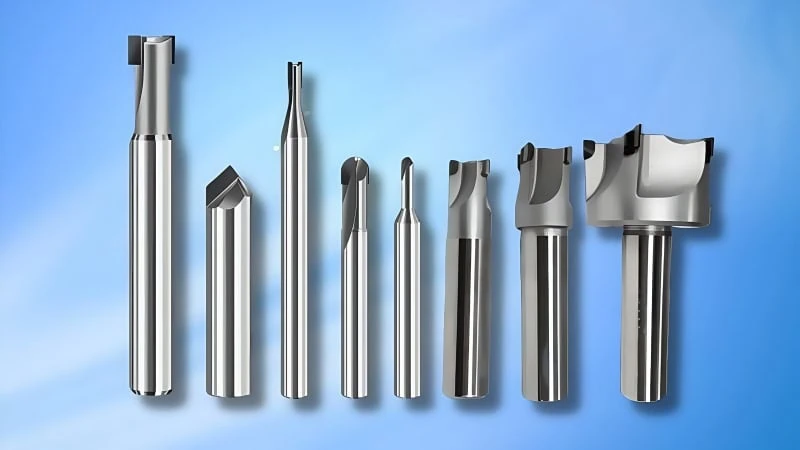
Which Specific PCD Tools Are Needed for Key Machining Stages?
Now that we understand why PCD is the superior choice, what are the essential PCD tools you need for the different steps of making a scroll compressor?
For key scroll compressor machining stages, you need specific PCD tools: face milling cutters for initial roughing and creating flat surfaces, custom form milling cutters to precisely machine the intricate scroll contours, and PCD boring tools for creating accurate bearing bores and seal grooves.
Face Milling Cutters for Roughing Operations
Before you can create the intricate spiral of a scroll, you must first establish a perfect foundation. This initial stage is called “roughing,” and its main goal is to quickly remove a large amount of metal from the raw aluminum casting and create perfectly flat surfaces. These surfaces, known as datum planes, serve as the reference points for all subsequent machining operations.
Think of it like a chef preparing a vegetable. The first step is to wash it and cut off the rough ends to create a clean, stable base before doing any fine slicing. A PCD face mill is the tool for this job.
These tools are designed for maximum material removal and stability.
- Design: They are typically large-diameter cutters fitted with multiple PCD inserts. This design allows them to make wide passes across the part, flattening the entire surface efficiently.
- Function: Even though it’s a “roughing” operation, using a PCD face mill is critical. As a carbide tool wears, it can start to produce a slightly concave or convex surface. In contrast, the exceptional wear resistance of PCD ensures that the reference surfaces remain flat and consistent, part after part.
The optimal cutter diameter and number of PCD inserts depend heavily on your machine’s horsepower and the specific casting. Therefore, discussing these details with your tooling supplier is a critical step to ensure you get the best performance and efficiency.
Form Milling Cutters for Finishing the Scroll Contours
This is the most critical and complex stage of the entire process. The heart of the compressor is the scroll itself—a precise, spiral-shaped wall that looks like a maze. The exact shape of this spiral, known as an involute curve, is what compresses the air or refrigerant. Machining this feature demands a tool of incredible precision and custom design. This is the job for a PCD form milling cutter.
Imagine a sculptor trying to create a detailed, repeating pattern. They wouldn’t use a standard flat chisel; they would use a special chisel ground to the exact shape of the pattern they want to create. A PCD form mill4 is exactly that—a custom-designed tool built for one specific purpose.
Why a Custom Design is Non-Negotiable
You cannot buy an off-the-shelf tool to machine a scroll profile. Each compressor model has a unique scroll geometry defined by the manufacturer’s engineers.
- Precision Profile: The cutting edge of the PCD form mill is ground to perfectly match the scroll’s involute profile from the engineering blueprint. This ensures the wall thickness, channel width, and spiral shape are machined with extreme accuracy.
- Direct Impact on Performance: Any deviation in this profile, even by a few micrometers, can lead to internal leaks, reducing the compressor’s efficiency and performance. A precisely made form tool directly translates to a high-quality, efficient final product.
These tools are a marvel of modern manufacturing, often designed in advanced CAD/CAM software and verified on optical measurement machines to guarantee their accuracy before they ever touch a piece of metal.
Boring Tools for Precise Bearing Bores and Seal Grooves
After the main scroll shape is formed, the final precision work begins. The scroll plate needs perfectly round and precisely located holes for the crankshaft bearings to sit in, as well as grooves for seals. These features ensure the moving parts spin smoothly without wobbling and that no high-pressure gas escapes. For this, you need PCD boring tools.
If face milling is about creating the foundation and form milling is the detailed sculpting, then boring is like using a high-precision drill to create the perfectly round, smooth tunnels and channels that allow the machine to function.
The requirements for these features go beyond just the correct diameter.
- Key Geometries: Critical factors include roundness (the hole must be a perfect circle), straightness (the hole must not be conical), and concentricity (multiple features must be perfectly centered with each other).
- Tooling Solution: PCD boring bars5 are used to achieve these tight tolerances. Because they are so wear-resistant, they produce consistently accurate holes over thousands of parts. For even greater precision, manufacturers often use a PCD combination boring bar. This is a special tool designed to machine multiple features—for example, a bearing bore, a chamfer, and a seal groove—all in a single pass. This method guarantees that all features are perfectly concentric and located, as the tool never moves between cuts.
Using these specialized PCD boring tools is the final step in ensuring the mechanical integrity and efficiency of the scroll compressor.
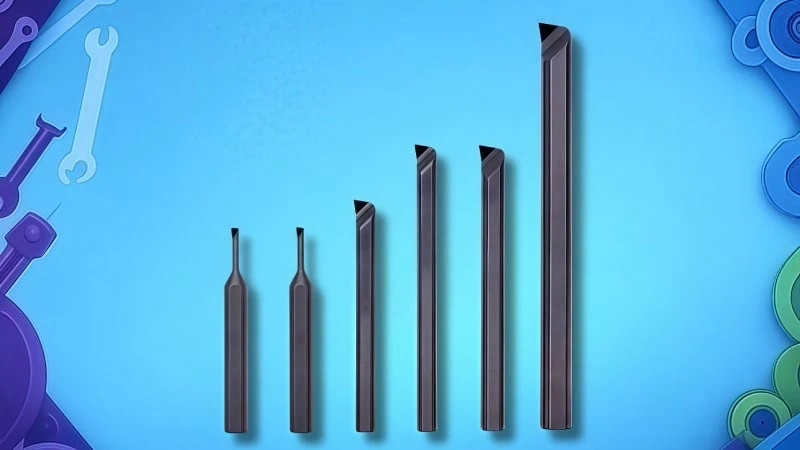
How Have Leading Manufacturers Benefited from Our PCD Solutions?
So, what are the real-world results that manufacturers see when they implement these PCD tooling solutions?
By implementing our PCD solutions, leading manufacturers have achieved significant benefits, including drastically slashed cycle times in high-volume automotive production, more than tripling tool life in HVAC applications, and attaining unprecedented levels of geometric precision for high-performance compressors.
Case Study 1: Slashing Cycle Times in Automotive Air Conditioning Compressor Production
The Challenge
A major Tier 1 automotive supplier was tasked with increasing production for a popular electric vehicle’s air conditioning compressor. Their existing production line, which used carbide tools, was already running at maximum capacity. The finishing operation on the aluminum scroll plate was a significant bottleneck, with a long cycle time and frequent tool changes that caused costly line stoppages. Their goal was to increase throughput without adding a new production line.
Our Solution
After analyzing their process, we implemented a comprehensive tooling upgrade focused on speed and efficiency. The solution involved two key components:
- A high-speed PCD face mill designed for aggressive material removal during the roughing stage.
- A custom-engineered PCD form mill with a specialized geometry that allowed for a much faster feed rate during the critical finishing pass, without sacrificing surface quality.
The Results
The impact on the manufacturer’s production was immediate and profound. By optimizing the process with our PCD tooling, they were able to run their machines significantly faster and more reliably.
| Metric | Previous (Carbide Tools) | After (Our PCD Solution) | Improvement |
|---|---|---|---|
| Cycle Time Per Part | 48 seconds | 35 seconds | 27% Reduction |
| Parts Per Hour | 75 | 102 | 36% Increase |
| Daily Production Output | 1,800 parts | 2,448 parts | 648 Additional Parts/Day |
By drastically reducing the cycle time, the supplier was able to meet the increased demand from their automotive client, effectively boosting their production capacity by over 35% using their existing machinery.
Case Study 2: Extending Tool Life by 300% in Residential HVAC Scroll Machining
The Challenge
A leading manufacturer of residential HVAC systems was struggling with high tooling costs and unpredictable process stability. When machining the A390 high-silicon aluminum scroll plates, their carbide inserts would wear out quickly and inconsistently, sometimes failing after just 800 parts. This led to a high scrap rate from out-of-spec parts and frustrated operators who were constantly monitoring and replacing tools.
Our Solution
Our primary goal was to deliver process stability and drastically extend tool life. We replaced their existing tooling with our proprietary grade of PCD, which is specifically engineered to resist the highly abrasive nature of A390 aluminum. The solution included our durable PCD form mill for the scroll profile and a robust PCD combination boring bar for the bearing bores.
The Results
The switch to our PCD tooling transformed their production floor from unpredictable to highly stable and cost-effective. The most significant achievement was the massive increase in tool lifespan.
| Metric | Previous (Carbide Tools) | After (Our PCD Solution) | Improvement |
|---|---|---|---|
| Average Tool Life | 1,200 parts | 5,100 parts | 325% Increase |
| Scrap Rate | 2.5% | < 0.1% | 96% Reduction in Scrap |
| Annual Tooling Cost | $120,000 | $45,000 | $75,000 Annual Savings |
While achieving over a 300% increase in tool life is a testament to the tool’s quality, final results can depend on factors like coolant application and machine rigidity. We always recommend a consultation to set optimal performance expectations. For this client, the result was a dramatic reduction in both tooling costs and wasted material.
Case Study 3: Achieving Unprecedented Verticality and Precision for a High-Performance Compressor
The Challenge
A manufacturer specializing in high-performance compressors for the medical gas industry was developing a new, ultra-efficient model. The design required a scroll wall with a verticality tolerance of less than 0.005 mm (5 micrometers). Their most advanced machining centers and best carbide tools could not consistently meet this requirement, producing parts that were, on average, 0.008 mm out of tolerance. This single issue was holding back the entire project.
Our Solution
This challenge was not about speed or tool life, but purely about precision. Our engineering team designed a solution focused on maximum rigidity and accuracy:
- An ultra-precise PCD form mill manufactured and verified to have a profile accuracy of under 2 micrometers.
- A solid-body PCD boring bar with a custom-designed dampening structure to eliminate vibration during the finishing pass.
The Results
The precision of our tooling solution enabled the client to finally achieve their design goals and launch their innovative new product. The improvement in geometric accuracy was something they had previously thought impossible.
| Quality Metric | Required Specification | Previous Best (Carbide) | Result (Our PCD Solution) |
|---|---|---|---|
| Scroll Wall Verticality | < 0.005 mm | 0.008 mm (Failed) | 0.003 mm (Passed) |
| Part-to-Part Consistency | High | Medium | Extremely High |
By implementing our high-precision PCD tools, the manufacturer was able to successfully produce a next-generation compressor that was more efficient and reliable than any of its predecessors, giving them a significant competitive advantage in the high-performance market.
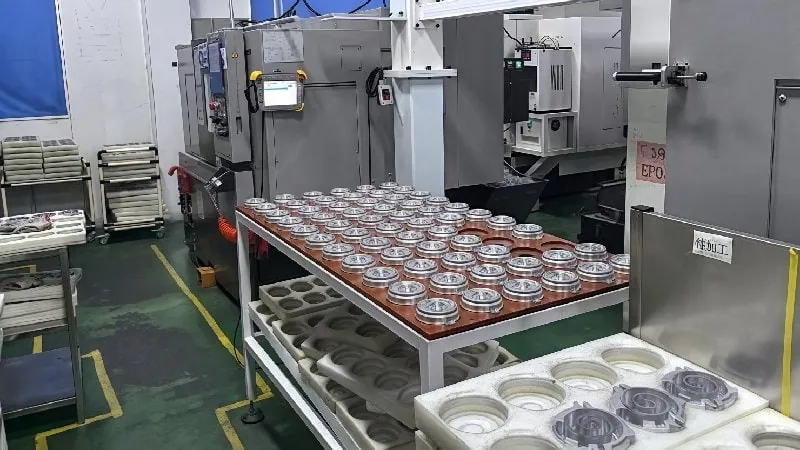
What Are the Critical Machining Parameters to Optimize?
So, once you have the right PCD tools, how do you set up your machine to get the best possible results?
To optimize performance with PCD tools, you must establish the correct speeds and feed rates to maximize efficiency without causing premature wear. Additionally, you need to manage the depth of cut to balance material removal with tool stability, and implement an effective coolant and chip evacuation strategy to protect both the tool and the workpiece.
Establishing Optimal Speeds and Feed Rates
Having a high-performance PCD tool is only half the battle; you have to run it at the correct parameters to unlock its true potential. Think of it like a race car. It’s built for speed, but you still need a skilled driver who knows the right gear and speed for every corner. For machining, this “skill” lies in setting the right speeds and feeds.
- Cutting Speed refers to how fast the tool’s cutting edge moves across the material.
- Feed Rate refers to how quickly the machine advances the tool into the workpiece.
A core principle of PCD tooling is that it thrives at high speeds. The surface speed for PCD machining of aluminum is typically much higher than for carbide, often allowing for significantly shorter cycle times. However, finding the “sweet spot” is key.
For example, a typical starting point for the cutting speed when milling aluminum with PCD can be in the range of 1,500 to 3,000 meters per minute (m/min). However, this is just a general guideline. The ideal parameters are influenced by many factors.
Important Note: The optimal speeds and feeds are not universal. They depend heavily on the specific grade of PCD, the rigidity of your machine, the complexity of the part, and the tool’s design. It is essential to use the recommendations from your tooling supplier as a starting point and then fine-tune the process from there.
Running the tool too slowly can be inefficient and may even lead to a poor surface finish, while running it too fast for the machine’s stability can introduce vibration and harm tool life.
Managing Depth of Cut for Efficiency and Precision
The depth of cut is simply how much material the tool removes in a single pass. Just like with speeds and feeds, this is not a one-size-fits-all parameter. It’s a careful balancing act between removing material quickly and maintaining the highest levels of accuracy. The strategy for this changes depending on whether you are roughing or finishing.
Roughing Strategy: Focus on Material Removal
During roughing operations, like with a PCD face mill, the goal is to remove as much material as possible, as quickly as possible. This means using a larger depth of cut. A deeper cut is more efficient, but it also puts more pressure on the tool and the machine.
Finishing Strategy: Focus on Precision
During finishing operations, especially with a custom PCD form mill on the scroll’s contours, the strategy flips. Here, the goal is precision. The depth of cut is typically reduced significantly. A lighter finishing pass has several advantages:
- It minimizes pressure on the tool, reducing any chance of tool or part deflection.
- It helps create a superior surface finish.
- It allows for tighter control over dimensional accuracy.
For a finishing pass on a scroll wall, the radial depth of cut (how much the tool steps over) might be very small, perhaps only 0.2 mm to 0.5 mm. This light “shaving” action is what produces the final, precise geometry. Always develop these parameters in partnership with your tooling expert to perfectly match the tool’s design to your quality needs.
Implementing an Effective Coolant and Chip Evacuation Strategy
Finally, a consistent and well-directed flow of coolant is critical for success. It performs two jobs that are equally important, much like how a car’s engine radiator and exhaust system are both essential for the engine to run properly.
- Cooling and Lubrication: Coolant prevents the tool and the workpiece from overheating. Even though PCD is highly resistant to heat, maintaining a stable temperature across the part is essential for holding tight dimensional tolerances.
- Chip Evacuation: This is arguably the most critical function in scroll machining. The coolant’s pressure and flow must be strong enough to “blast” the small aluminum chips out of the narrow, deep scroll channels.
What happens if chip evacuation is poor? If chips are left in the channel, the tool can end up re-cutting them on its next pass. This action is highly destructive. It can damage the tool’s delicate cutting edge and will ruin the part’s carefully machined surface finish, often leading to a scrapped part.
For best results:
- High-Pressure Coolant is highly recommended to forcefully flush chips out of deep pockets and channels.
- Through-Tool Coolant, where the coolant is delivered directly through the center of the tool, is the ideal solution as it delivers a precise, high-pressure stream exactly where it is needed most—at the cutting edge.
An effective coolant strategy isn’t just a best practice; it is a fundamental requirement for high-quality, high-volume scroll compressor machining.
Conclusion
Selecting the optimal PCD tool for scroll compressor machining is not a simple purchase; it is a strategic engineering decision. The process moves from understanding why PCD offers transformative advantages in longevity and quality, to identifying what specific tools—from face mills to custom form cutters—are required for each stage.
As demonstrated by real-world case studies, the benefits are not theoretical. They translate into tangible results: faster cycle times, lower operational costs, and higher-quality components that were previously unattainable. Finally, learning how to optimize machining parameters ensures you extract the maximum value from your investment. By following this comprehensive approach, manufacturers can turn a tooling decision into a powerful competitive advantage.
References
- PCD (Polycrystalline Diamond) tool1 – ZYDiamondTools product category page for PCD & PCBN cutting tools.
- Ra (Roughness Average)2 – Wikipedia article defining surface roughness and explaining measurement parameters like Ra.
- Built-Up Edge (BUE)3 – A technical explanation of the Built-Up Edge phenomenon in metal cutting.
- PCD form mill4 – Product page for custom PCD forming tools from ZYDiamondTools, designed for specific profiles like scroll contours.
- PCD boring bars5 – Product page for PCD and CBN tipped boring bars from ZYDiamondTools.
